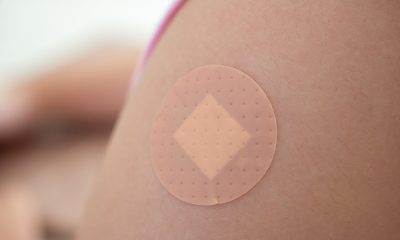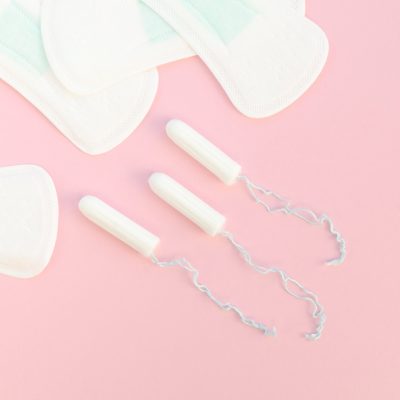To receive the Femtech World newsletter, sign up here.
News
Biden signs executive order to advance women’s health research
The order allocates US$12bn to and marks the “most comprehensive set” of executive action to improve research on women’s health

President Joe Biden has signed an executive order aimed at improving women’s health research across the federal government.
The president issued the order at a White House Women’s History Month event, where he was joined by First Lady Jill Biden, Vice President Kamala Harris and former first lady of California Maria Shriver.
The order allocates US$12bn to and marks the “most comprehensive set” of executive action to advance research on women’s health.
According to the White House, the investment would be used to create a Fund for Women’s Health Research at the National Institutes of Health and to establish a nationwide network of research centres of excellence and innovation in women’s health.
These directives would ensure women’s health is integrated and prioritised across the federal research portfolio and budget and would galvanise new research on a wide range of topics, including women’s midlife health.
However, the investment is not guaranteed. Given Congress has the “power of the purse,” lawmakers can move to deny the president his funding.
“So now that the President has done his job, we have to do ours,” Shriver told journalists at the event.
“We have to get Congress to approve the US$12bn investment this president has called for to implement this bold vision.”
Women’s health has long been underfunded and underresearched. Historically, medical studies have excluded female participants and research data have been collected from males and generalised to females. It wasn’t until the 1990s that the federal government mandated women be included in federally funded medical research.
“We still know too little about how to effectively prevent, diagnose and treat a wide array of health conditions in women,” said Dr Carolyn Mazure, the head of the White House initiative on women’s health.
Biden’s new executive order, according to the White House, is hoped to integrate and prioritise women’s health across various federal agencies, fuel new research, and order the Office of Management and Budget and the Gender Policy Council to assess gaps in federal funding.
In addition, the White House said Biden and first lady Dr Jill Biden would be announcing over 20 actions and commitments being taken by several federal agencies. This would include the launch of a new effort from the National Institute of Health to direct “key investments” of US$200m to fund new, interdisciplinary women’s health research.
These actions, it said, build on the First Lady’s announcement last month of the Advanced Research Projects Agency for Health (ARPA-H) Sprint for Women’s Health, which committed US$100m towards research and development in women’s health.
Menopause
Sleep-related disorders linked to hypertension in postmenopausal women

New research suggests sleep disorders in postmenopausal women may raise the risk of hypertension — abnormally high blood pressure.
Postmenopausal women tend to have poorer blood pressure control than men of the same age, partly due to falling oestrogen.
They also report more sleep problems, including short sleep, trouble sleeping or obstructive sleep apnoea (when breathing repeatedly stops and starts during sleep).
A study of more than 3,500 naturally postmenopausal women examined links between sleep-related disorders and the odds of hypertension.
The study found that trouble sleeping and obstructive sleep apnoea were associated with higher odds of hypertension.
It also suggested a U-shaped pattern for sleep duration — both too little and too much sleep were linked with increased risk.
A subgroup analysis indicated body mass index played a role, with stronger effects seen in women with obesity.
The findings highlight the value of sleep health and weight management in reducing hypertension risk in this group.
Dr Monica Christmas, associate medical director for The Menopause Society, said: “Although it isn’t possible to determine causality or which came first—sleep dysfunction or hypertension—the study findings raise awareness around the importance of improving sleep quality and optimal weight management during and after the menopause transition as key factors in mitigating long-term cardiovascular risk.”
Sleep is fundamental to cardiovascular health, and women after the menopause commonly report difficulty getting adequate rest.
Despite a research gap focused specifically on postmenopausal women, evidence increasingly supports sleep disturbance as a substantial, often undervalued, risk factor.
Wellness
Self-guided hypnosis significantly reduces menopausal hot flushes, study finds
News
Smart textiles bra could help detect cancer in women with intellectual disabilities

Women with intellectual disabilities could receive added monitoring for breast cancer with the development of a smart textiles bra by researchers at Nottingham Trent University (NTU) and the University of Glasgow (UofG).
Funded by Cancer Research UK, a team of scientists and designers are developing an electronic textile which would fit inside a bra and monitor whether a tumour is growing in real time, before alerting clinicians to potential risks.
Although women with intellectual disabilities have a lower incidence of breast cancer, they face significantly higher mortality rates due to barriers in accessing current screening methods.
The research is led by Professor Yang Wei of the Nottingham School of Art & Design (NSA&D) and Professor Deborah Cairns, director of SLDO (UofG).
Professor Wei said: “Breast cancer can develop over time, and while some types grow quickly, others may progress slowly, making early detection critical for improving survival outcomes.
“This technology has the potential to save women’s lives by detecting tumours early, while being used as an added measure alongside all other normal checks and scans.”
“As MRI scans can be months apart, patients could be given better peace of mind by knowing that any growth between monitoring appointments would be picked up.
“We hope in the future that this technology could reduce the need for many other checks, such as MRI, ultrasound and mammograms, and in doing so create efficiencies for health services.”
The research is being developed at NTU’s Medical Technologies Innovation Facility (MTIF) and the Scottish Learning Disabilities Observatory (SLDO) at UofG, with an investment of around £100,000 from Cancer Research UK.
The technology uses a form of electrical current that can scan to spot subtle differences in body tissues.
Because tumours tend to be denser and hold less water than healthy areas, the device can help differentiate them.
The technology has the potential to detect growths as little as 5mm – enabling earlier detection and triggering other scans to be taken, such as MRI.
The device would record data and provide feedback via smartphone to the wearer, carers and clinicians so that assessments can be made.
It will be co-designed with input from women with intellectual disabilities, carers, and healthcare professionals to ensure usability and effectiveness.
The research team says there’s potential for the technology to be developed as part of a new bra altogether, as well as an insert.
Cancer Research UK figures show, there are 56,900 new cases of breast cancer in the UK every year, with around 11,200 breast cancer deaths.
Research information manager at Cancer Research UK, Dr Dani Skirrow, said: “Over the past 50 years, our work has helped to nearly double breast cancer survival in the UK.
“We’re committed to making sure everyone shares in this progress equally, regardless of who they are, where they’re from or what type of cancer they have.
“The ‘Smart Bra’ has the potential to make breast cancer screening more accessible so that more people can benefit from it.
“This would help us to detect more breast cancers at the earliest stage, when treatments are most likely to work.
“We’re supporting our scientists to develop innovative technologies like the ‘Smart Bra’ to make sure the benefits of research are shared by everyone.”
-

 Hormonal health3 weeks ago
Hormonal health3 weeks agoDozens of women report suffering painful burns after using Always sanitary towels
-

 News4 weeks ago
News4 weeks agoWomen’s health innovations recognised in TIME’s Best Inventions 2025
-

 Events3 weeks ago
Events3 weeks agoCutting through the noise in femtech – key takeaways from Women’s Health Week 2025
-

 News3 weeks ago
News3 weeks agoAI embryo selection tool wins European approval
-

 News3 weeks ago
News3 weeks agoTestosterone patch shows promise for menopausal women
-

 News4 weeks ago
News4 weeks agoScientists develop breakthrough approach to detecting endometriosis in menstrual blood
-

 Wellness4 days ago
Wellness4 days agoOpinion: Not ‘just stress’ – How hormonal changes affect women’s brain function
-

 Features2 weeks ago
Features2 weeks agoFrom SEO to GEO: How women’s health brands can get found in the age of AI




























